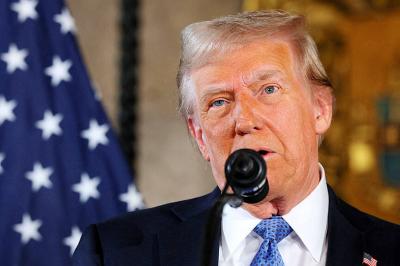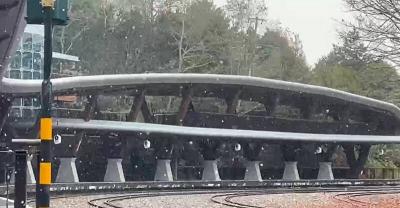Taipei Mayor Ko Wen-je (柯文哲) yesterday outlined plans for “smart and green” city development, announcing that bike paths will be laid alongside all of the capital’s major arteries.
In a speech at the Green Together City-to-City Sustainability Dialogues also attended by Taichung Mayor Lin Chia-lung (林佳龍) and Taoyuan Mayor Cheng Wen-tsan (鄭文燦), Ko outlined his vision for a “green city” characterized by zero growth in electricity consumption and usage of public transportation by 80 percent of city residents.
Ko outlined policies aimed at increasing use of public transportation, saying that new bicycle paths would be laid alongside all city roads 40m wide or more.
“Presently, we have bicycles, but we don’t have bicycle lanes,” Ko said, referring to the rapid growth of the city’s YouBike service.
Taipei Department of Transportation Commissioner Chung Hui-yu (鍾慧諭) said the city has budgeted NT$1.2 billion (US$38 million) this year for bicycle path construction costs. City plans call for quadrupling the length of city bicycle paths to 209km by 2019.
Ko also announced that the city was considering introducing a car-sharing program, as well as reforms to more closely integrate the city’s bus lines with the MRT, update bus computer systems and enable fees for bus rides to be charged based on distance.
He said the city also plans to promote green architecture and use special water-porous pavement to reduce Taipei’s urban heat-island effect.
In addition to “green” policies, Ko also announced policies for “smart” technological reform, highlighted by changes to the city’s free WiFi service.
“With more than 6,400 hot spots, Taipei Free consumes between NT$10 million and NT$20 million every year, but even I myself have trouble using the service,” Ko said.
He said that in the future, the city would merge Taipei Free into the national ITaiwan service, dropping the number of hotspots to less than 2,000, while integrating additional private hotspots operated by businesses, such as Starbucks and 711.

US President Donald Trump said "it’s up to" Chinese President Xi Jinping (習近平) what China does on Taiwan, but that he would be "very unhappy" with a change in the "status quo," the New York Times said in an interview published yesterday. Xi "considers it to be a part of China, and that’s up to him what he’s going to be doing," Trump told the newspaper on Wednesday. "But I’ve expressed to him that I would be very unhappy if he did that, and I don’t think he’ll do that," he added. "I hope he doesn’t do that." Trump made the comments in

NOT AN OPENING: Trump’s violation of international law does not affect China’s consideration in attacking Taiwan; Beijing lacks capability, not precedent, an official said Taiwanese officials see the US’ capture of the president of Venezuela as a powerful deterrent to Beijing’s aggression and a timely reminder of the US’ ability to defeat militaries equipped with Chinese-made weapons. The strikes that toppled Venezuelan President Nicolas Maduro signaled to authoritarian leaders, including Chinese President Xi Jinping (習近平), US President Donald Trump’s willingness to use military might for international affairs core to US interests, one senior official in Taipei’s security circle said. That reassured Taiwan, the person said. Taipei has also dismissed the idea that Trump’s apparent violation of international law could embolden Beijing, said the official, who was not

A cold surge advisory was today issued for 18 cities and counties across Taiwan, with temperatures of below 10°C forecast during the day and into tonight, the Central Weather Administration (CWA) said. New Taipei City, Taipei, Taoyuan and Hsinchu, Miaoli and Yilan counties are expected to experience sustained temperatures of 10°C or lower, the CWA said. Temperatures are likely to temporarily drop below 10°C in most other areas, except Taitung, Pingtung, Penghu and Lienchiang (Matsu) counties, CWA data showed. The cold weather is being caused by a strong continental cold air mass, combined with radiative cooling, a process in which heat escapes from

Snow this morning fell on Alishan for the first time in seven years, as a strong continental cold air mass sent temperatures plunging across Taiwan, the Central Weather Administration (CWA) said. The Alishan weather station, located at an elevation of about 2,200m in central Taiwan, recorded snowfall from 8:55am to 9:15am, when the temperature dropped to about 1°C, the CWA said. With increased moisture and low temperatures in the high-altitude Alishan area, the conditions were favorable for snow, CWA forecaster Tsai Yi-chi (蔡伊其) said. The last time snow fell at the Alishan weather station was on Jan. 10, 2018, while graupel fell there